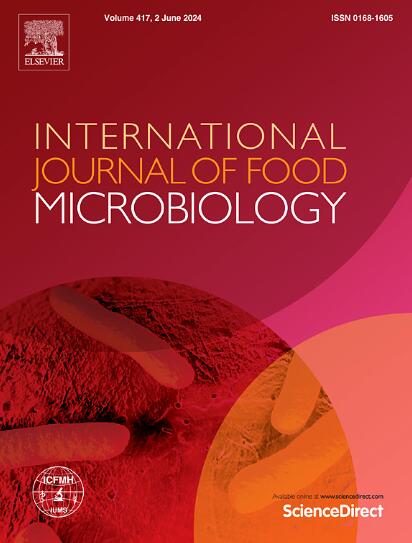橄榄发酵过程中核心细菌和真菌属的测定
IF 5.2
1区 农林科学
Q1 FOOD SCIENCE & TECHNOLOGY
International journal of food microbiology
Pub Date : 2025-07-14
DOI:10.1016/j.ijfoodmicro.2025.111344
引用次数: 0
摘要
食用橄榄是地中海盆地最古老、最重要的发酵食品之一。它们的生产仍然与传统做法密切相关,缺乏热处理,依赖于自然污染和选择因素(NaCl, pH,酚类物质的发生等)决定了微生物群落的动态。乳酸菌(LAB)和酵母在食用橄榄微生物群落中起着关键作用,但一些嗜盐和嗜碱微生物也可能对这种发酵植物食品的质量和安全起着积极或消极的作用。我们利用从FoodMicrobionet数据库中提取的元分类学数据,对食用橄榄的细菌和真菌微生物群落结构进行了定量分析,并确定了不同贸易制剂中的核心属。细菌中最常见的属是Celerinatantimonas和Lactiplantibacillus,其次是LAB、嗜盐和嗜碱乳酸菌(HALAB)和革兰氏阴性菌,包括非嗜盐菌种。同样,毕赤酵母属(Pichia)、念珠菌属(Candida)和Wickerhamomyces属(Wickerhamomyces) 3个真菌属数量最多,分布最广。细菌和真菌的分布在不同的橄榄品种、橄榄、卤水和接触表面或材料之间以及不同的生产阶段都有显著差异,没有发现与成熟和贸易准备组合相关的明确分组,尽管在西班牙风格的绿橄榄中具有丰富的特征。发酵剂的添加对微生物群落的组成和动态有不同程度的影响。本文章由计算机程序翻译,如有差异,请以英文原文为准。
Determining the core bacterial and fungal genera in table olive fermentations
Table olives are among the most ancient and important fermented foods of the Mediterranean basin. Their production is still strongly related to traditional practices, and the lack of thermal treatments, the reliance on natural contamination and selective factors (NaCl, pH, occurrence of phenolics, etc.) determine the dynamics of the microbial community. Lactic acid bacteria (LAB) and yeasts have a pivotal role in table olive microbial communities, but several halophilic and alkalophilic microorganisms may also contribute, positively or negatively, to the quality and safety of this fermented vegetable food.
We have used metataxonomic data extracted from the FoodMicrobionet database to provide quantitative insights on the structure of bacterial and fungal microbial communities of table olives and to identify core genera in different trade preparations.
Celerinatantimonas and Lactiplantibacillus were the most prevalent genera among bacteria, followed by several LAB, halophilic and alkalophilic lactic acid bacteria (HALAB) and Gram negatives, including non-halophilic species. Similarly, 3 fungal genera (Pichia, Candida, and Wickerhamomyces) were the most abundant and prevalent among fungi.
The distribution of both bacteria and fungi varied significantly in different olive varieties, among olives, brines and contact surfaces or materials, and at different production stages, and no clear grouping related to the combination of ripeness and trade preparation was found, although HALAB were characteristically abundant in Spanish style green olives. Addition of starter cultures affected the composition and dynamics of microbial communities to a variable extent.
求助全文
通过发布文献求助,成功后即可免费获取论文全文。
去求助
来源期刊
CiteScore
10.40
自引率
5.60%
发文量
322
审稿时长
65 days
期刊介绍:
The International Journal of Food Microbiology publishes papers dealing with all aspects of food microbiology. Articles must present information that is novel, has high impact and interest, and is of high scientific quality. They should provide scientific or technological advancement in the specific field of interest of the journal and enhance its strong international reputation. Preliminary or confirmatory results as well as contributions not strictly related to food microbiology will not be considered for publication.

 求助内容:
求助内容: 应助结果提醒方式:
应助结果提醒方式:


